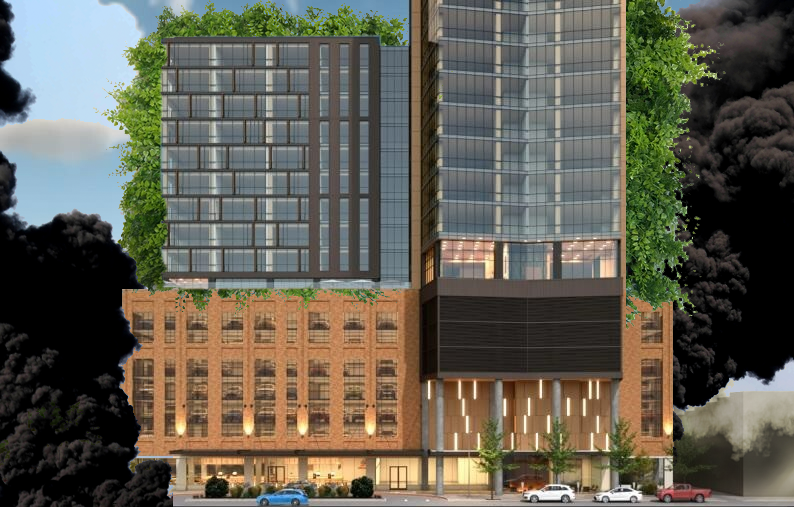AHM Group’s Brian Pratt touted the environmentally superior aspects of mass timber construction during his presentation of their bold vision for Downtown West at the LCRA Board meeting introducing the tower they propose at the northeast corner of 21st St and Locust. The building would consist of 22 floors of mass timber on a 7 story concrete podium. It would be the 2nd mass timber building in St. Louis after the office building portion of the second phase of City Foundry. Depending on how you count, this may be the tallest in the world if built beating out the soon to be completed Ascent in Milwaukee also designed Korb & Associates.
Milwaukee Journal Sentinel – The tallest mass timber building in the world is opening in downtown Milwaukee. It’s healthier for the planet. And you.
Fast Company – Is a Mass Timber Construction Boom Coming to America?
Using mass timber for the tower means a building that weighs 50% less. With a lighter building, a less resource-intensive foundation is required to hold the load, saving a lot of GHG emissions to make, transport, and install materials. The wood itself captures CO2, some 3,000 metric tons they estimate, rather than releasing it in the manufacture of concrete and steel for a net gain of 6,370 metric tons of CO2 emissions avoided.
That’s all great, but there’s a rock in that ice cream. There are six floors of structured parking. While people can inhabit a wood, steel, or concrete building, cars, which are heavy and getting heavier, require housing made of reinforced concrete. There are planned to be over 350 spaces for the 270-280 apartments plus ground level retail and an 8th floor restaurant. The parcel is zoned I. Central Business District which has no parking mandate.
While the mass timber helps lower the overall impact of the building’s construction it also means the car storage represents an even bigger portion of the CO2 impact.
Even more egregious is the situation in high-rise buildings, especially the modern green mass timber ones like the new Apex Center designed by William McDonough + Partners. Its concrete parking structure ends up being the vast majority of its upfront carbon. Because the building is all-electric and powered by renewables and designed for disassembly, that concrete parking structure ends up being almost the entirety of its full life-cycle emissions. I concluded, “As always, it is the cars that are killing us.”
Treehugger – An Embodied Carbon Iceberg Lies Under Our Homes and Buildings
The article estimates the CO2 per structured parking space at 17 tons. 350 * 17 = 5,950 metric tons of CO2 for construction. Then there’s all the CO2 from promoting car ownership and use. That eats up all the savings due to using mass timber. I usually point out how parking spoils the brew from a financial sustainability perspective, but here we see how it does from an environmental sustainability one. How about lose a level of parking and market the environmentally-conscious building to car-free environmentally-conscious tenants?
Of course using mass timber is better than not for the equivalent height and capacity building, so I’m looking a gift horse in the mouth here, but if a goal is to be bold and build a sustainable building, reducing the amount of parking would be bolder. It would make the building cheaper to build (less tax abatement) and rents lower as well.

